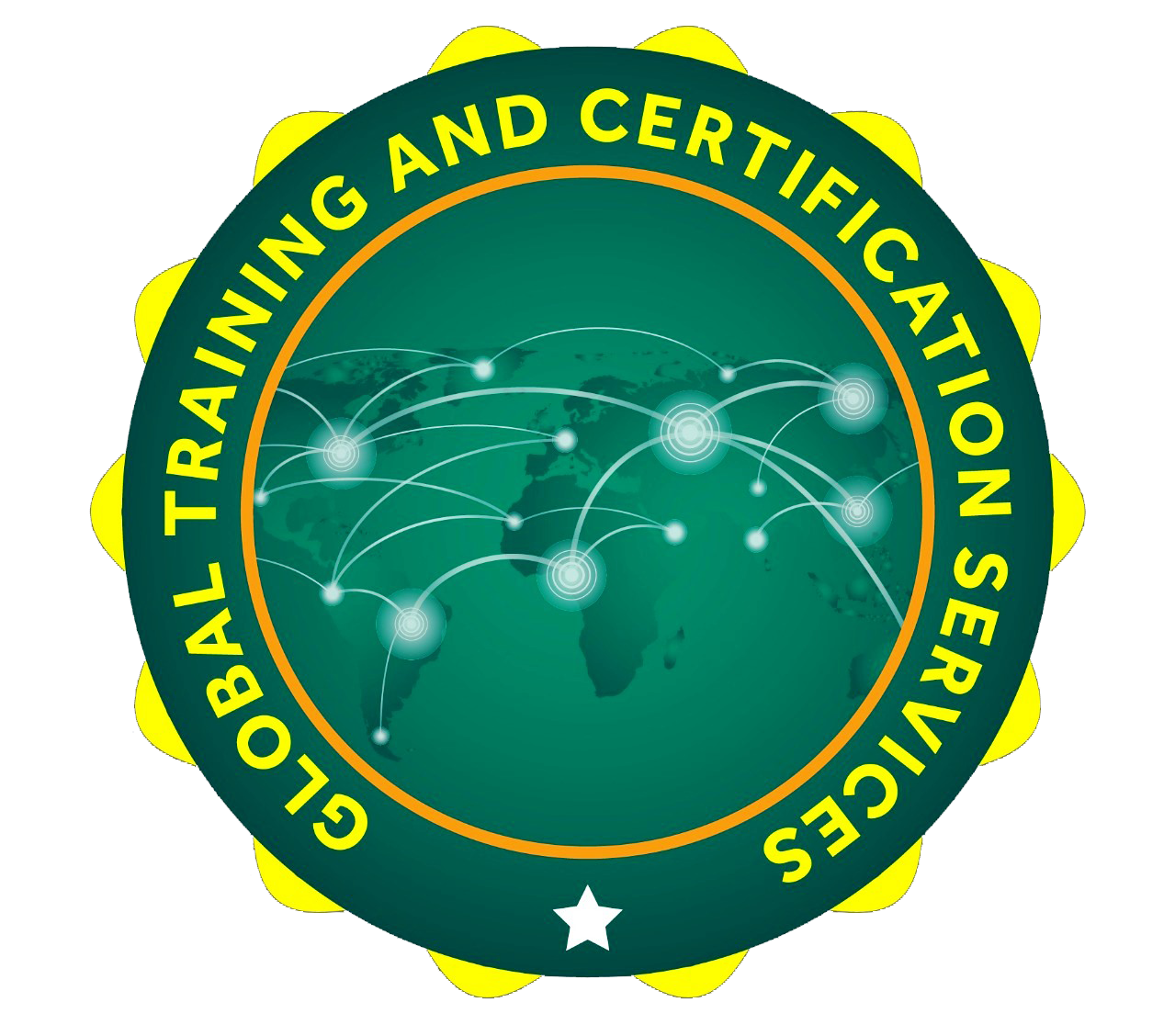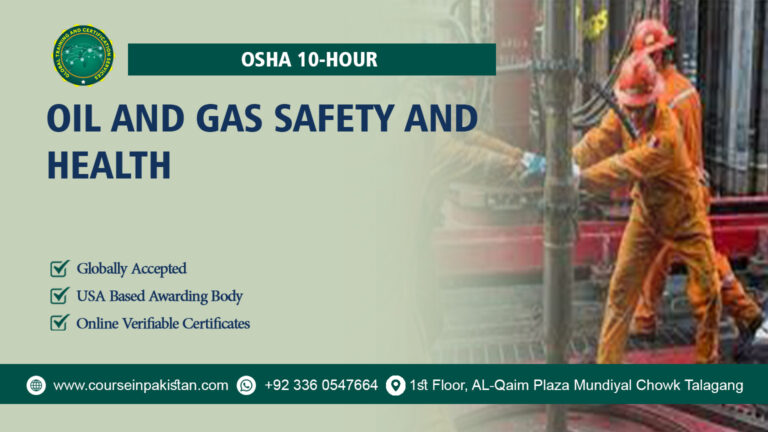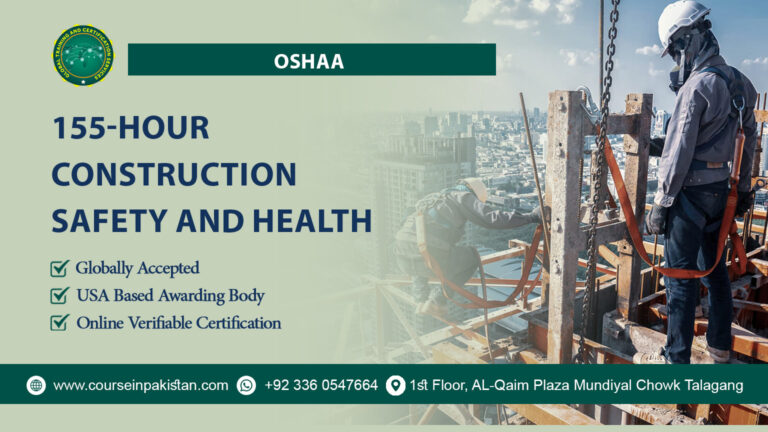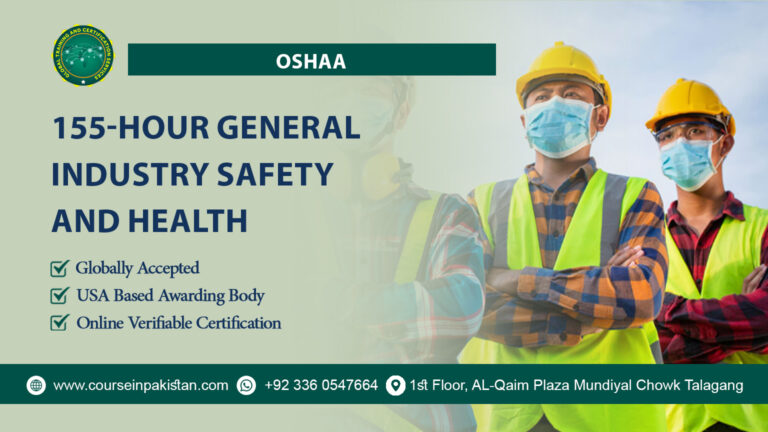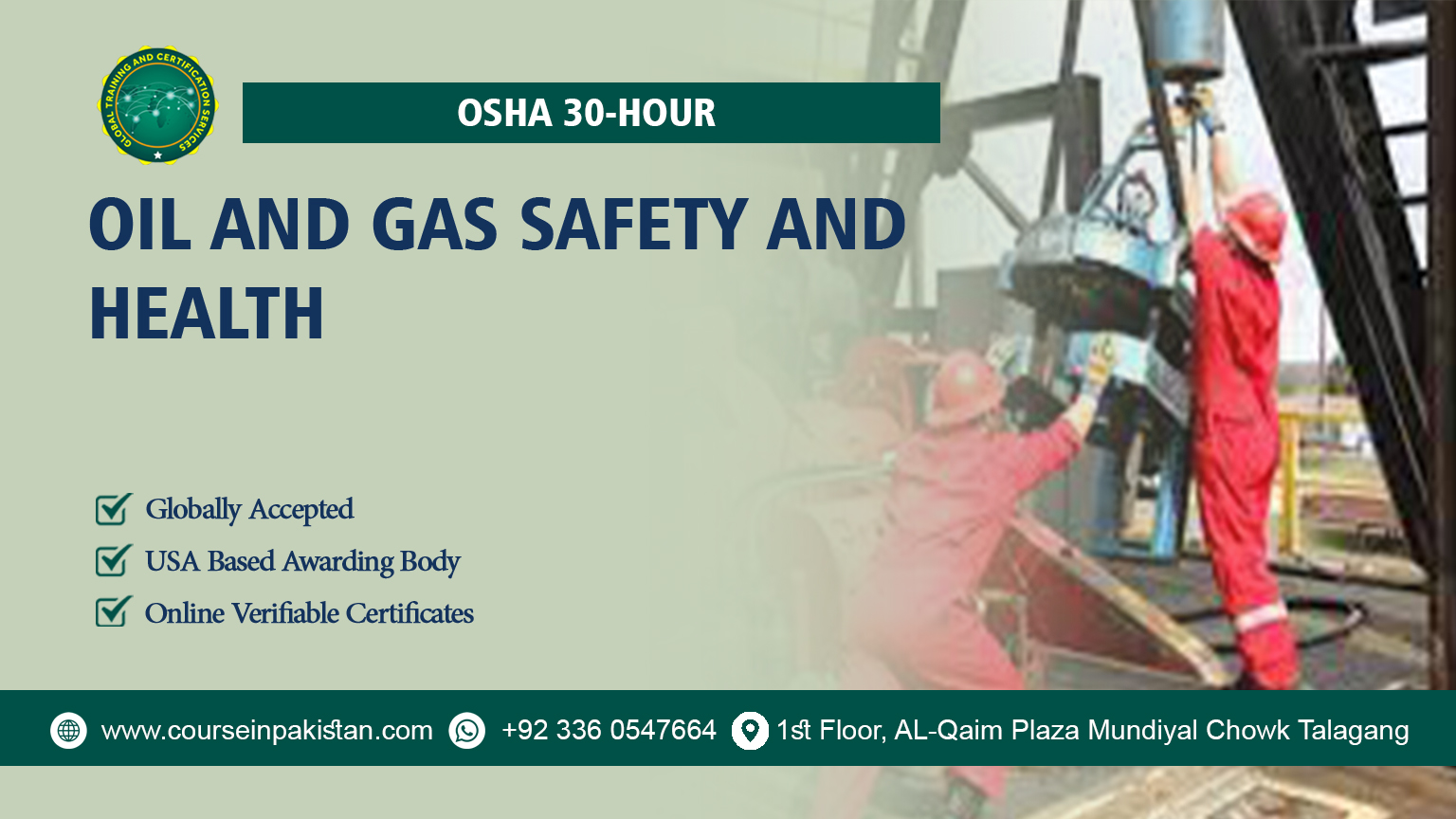
OSHA 30-Hour Oil and Gas Safety and Health
In the oil and gas industry, safety isn’t just a priority—it’s a necessity. The unique hazards of this sector demand rigorous training and a deep understanding of safety protocols. For professionals seeking comprehensive safety education, OSHA’s 30-Hour Safety and Health course tailored for the oil and gas industry offers an invaluable opportunity. This blog post will guide you through the course introduction, overview, benefits, study units, learning outcomes, target audience, and potential future progression.
OSHA’s 30-Hour Safety and Health course for the oil and gas industry is a detailed training program designed to provide a thorough understanding of the safety and health standards necessary for working in this high-risk field. This course is crafted to help workers, supervisors, and safety professionals gain extensive knowledge about OSHA regulations, hazard management, and best practices for ensuring a safe working environment.
Course Overview
The 30-hour course is delivered through a combination of classroom instruction and practical exercises, covering a wide range of topics crucial for safety in the oil and gas industry. The program is designed to meet the needs of both entry-level and experienced personnel, offering an in-depth exploration of safety standards and risk management techniques specific to the oil and gas sector.
Course Benefits
- Enhanced Safety Knowledge: Gain a deep understanding of OSHA regulations and safety practices specific to the oil and gas industry.
- Compliance Assurance: Learn how to navigate and comply with complex regulatory requirements, helping to prevent violations and potential fines.
- Risk Reduction: Develop skills to identify and mitigate hazards, reducing the likelihood of accidents and health issues on the job.
- Career Advancement: Increase your qualifications and enhance your resume with a certification that demonstrates a commitment to safety and professionalism.
- Improved Safety Culture: Learn how to foster a positive safety culture within your organization, leading to a safer and more productive work environment.
Course Study Units
The OSHA 30-Hour course is divided into the following key study units:
- Introduction to OSHA and the Oil and Gas Industry
- Respiratory Protection
- Confined Space Entry
- Electrical Safety
- Fire Safety and Prevention
- Safety and Health Programs
- Safety Management Systems
- Hazard Recognition and Control
- Emergency Response Planning
- Personal Protective Equipment (PPE)
- Environmental Safety Practices
- Machine Guarding and Safety
- Process Safety Management (PSM)
- Health Hazards in the Oil and Gas Industry
- Chemical Safety and Hazard Communication
Learning Outcomes
By the end of the course, participants will be able to:
-
1. Introduction to OSHA and the Oil and Gas Industry
- Understand OSHA’s role and responsibilities in workplace safety.
- Identify key OSHA regulations and standards relevant to the oil and gas industry.
- Explain the specific safety and health challenges of the oil and gas sector.
- Recognize the importance of OSHA compliance and its impact on operational safety.
2. Respiratory Protection
- Identify types of respiratory protection equipment and their appropriate applications.
- Understand the selection, use, and maintenance of respirators.
- Conduct fit tests and ensure proper respirator fit for employees.
- Implement and manage respiratory protection programs in compliance with OSHA standards.
3. Confined Space Entry
- Understand the hazards associated with confined spaces and the requirements for safe entry.
- Develop and implement confined space entry procedures and permit systems.
- Conduct hazard assessments and implement control measures for confined spaces.
- Ensure proper training and emergency procedures for confined space entry.
4. Electrical Safety
- Identify electrical hazards and understand electrical safety standards.
- Implement safe work practices for electrical installations and maintenance.
- Understand lockout/tagout procedures and their application in electrical safety.
- Conduct inspections and ensure compliance with electrical safety regulations.
5. Fire Safety and Prevention
- Understand the principles of fire safety and fire prevention strategies.
- Implement fire protection systems and ensure proper maintenance.
- Develop and conduct fire drills and training programs.
- Identify and mitigate fire hazards in the workplace.
6. Safety and Health Programs
- Develop and implement effective safety and health programs.
- Evaluate the effectiveness of safety programs and make necessary improvements.
- Understand the components of a successful safety program, including policy development and employee training.
- Monitor and ensure compliance with program requirements.
7. Safety Management Systems
- Understand the principles and components of safety management systems (SMS).
- Develop and implement SMS tailored to organizational needs.
- Conduct regular assessments and audits of safety management systems.
- Integrate safety management principles into daily operations and decision-making.
8. Hazard Recognition and Control
- Identify workplace hazards and assess their potential impact.
- Implement effective control measures to mitigate identified hazards.
- Utilize tools and techniques for hazard recognition and risk assessment.
- Promote a proactive approach to hazard management and safety improvements.
9. Emergency Response Planning
- Develop and implement comprehensive emergency response plans.
- Conduct drills and simulations to test emergency response readiness.
- Understand roles and responsibilities in emergency situations.
- Evaluate and refine emergency response plans based on drills and actual incidents.
10. Personal Protective Equipment (PPE)
- Identify various types of PPE and their appropriate uses in the oil and gas industry.
- Understand the selection, use, and maintenance of PPE.
- Conduct PPE assessments to ensure proper fit and functionality.
- Ensure compliance with PPE regulations and training requirements.
11. Environmental Safety Practices
- Understand environmental regulations and their impact on oil and gas operations.
- Implement practices to minimize environmental impact and ensure regulatory compliance.
- Promote sustainability initiatives within the organization.
- Monitor and assess environmental performance and impact.
12. Machine Guarding and Safety
- Identify and understand machine guarding requirements and safety standards.
- Implement effective machine guarding to prevent accidents and injuries.
- Conduct regular inspections and maintenance of machine guards.
- Train employees on safe machine operation and guarding procedures.
13. Process Safety Management (PSM)
- Understand the components and principles of Process Safety Management.
- Develop and implement PSM programs to prevent major incidents.
- Conduct process hazard analyses and risk assessments.
- Evaluate the effectiveness of PSM systems and make necessary improvements.
14. Health Hazards in the Oil and Gas Industry
- Identify common health hazards associated with oil and gas operations.
- Understand the health effects of exposure to these hazards.
- Implement control measures to mitigate health risks.
- Promote health and wellness programs tailored to the oil and gas industry.
15. Chemical Safety and Hazard Communication
- Understand chemical safety standards and hazard communication requirements.
- Develop and implement effective hazard communication programs.
- Properly label and handle chemicals in accordance with OSHA standards.
- Train employees on chemical safety, including the use of Safety Data Sheets (SDS) and proper storage practices.
These learning outcomes aim to equip participants with the knowledge and skills necessary to manage safety effectively across various aspects of the oil and gas industry.
Who Is This Course For?
This course is ideal for:
- Oil and Gas Workers: Entry-level and experienced workers who need a comprehensive understanding of safety practices.
- Safety Professionals: Those seeking to enhance their expertise and ensure regulatory compliance.
- Supervisors and Managers: Individuals responsible for overseeing safety in oil and gas operations.
- Contractors: Professionals involved in oil and gas projects who need to understand safety protocols.
Future Progression
Completing the OSHA 30-Hour Safety and Health course opens doors to advanced safety certifications and professional growth opportunities. Graduates may consider pursuing:
- OSHA 500/501 Train-the-Trainer Courses: To become authorized OSHA trainers.
- Certified Safety Professional (CSP) or Certified Industrial Hygienist (CIH): Advanced certifications for safety and health professionals.
- Specialized Industry Certifications: In areas such as environmental management, risk assessment, or emergency response.
This foundational course not only enhances your safety knowledge but also positions you for continued professional development in the safety and health field. Embrace the opportunity to become a leader in safety and make a significant impact on your workplace and beyond.
For more information or to enroll in the course, contact your local OSHA training provider today!
